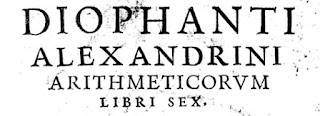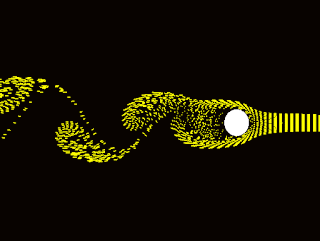Mathematics is very unlike any other discipline, and 2017 demonstrated it in spades!
Imagine, if you will, what it takes to prove out a hypothesis or conjecture in science. Years of careful and often costly experimentation or observation produces results that, should any tiny detail lead to results that might overturn part or all of the hypothesis and its predictions through new observations and experiments, will lead to the hypothesis being tested more acutely or perhaps continue to be used after having its limitations considered (the best case scenario), shelved, or unceremoniously dumped into the rubbish bin of failed scientific propositions. Starts With a Bang's Ethan Siegel recently lamented that scientific proof is a myth:
You've heard of our greatest scientific theories: the theory of evolution, the Big Bang theory, the theory of gravity. You've also heard of the concept of a proof, and the claims that certain pieces of evidence prove the validities of these theories. Fossils, genetic inheritance, and DNA prove the theory of evolution. The Hubble expansion of the Universe, the evolution of stars, galaxies, and heavy elements, and the existence of the cosmic microwave background prove the Big Bang theory. And falling objects, GPS clocks, planetary motion, and the deflection of starlight prove the theory of gravity.
Except that's a complete lie. While they provide very strong evidence for those theories, they aren't proof. In fact, when it comes to science, proving anything is an impossibility.
The reason that absolute scientific proof is an impossibility is because reality is, in reality, very complicated. Our limitations as real people living in the real world constrains our ability to see, test or even to imagine every possible detail of existence that might affect how reality works. As a result, every genuine scientific theory and hypothesis can potentially be shown to be false, which is a major part of what separates science from pseudoscience.
There is only one serious human discipline that doesn't have that limitation: mathematics. One of the most fun descriptions that gets into what mathematical proofs can do that scientific proofs cannot that we saw this year was presented in Thomas Oléron Evans and Hannah Fry's book The Indisputable Existence of Santa Claus: The Mathematics of Christmas:
The scientific method takes a theory - in our case that Santa is real - and sets about trying to prove that it is false. Although this may seem a little counterintuitive on the surface, it actually does make a lot of sense. If you go out looking for evidence that Santa doesn't exist and don't find any ... well then, that is pretty revealing. The harder you try, and fail, to show that Santa cannot exist, the more support youy have for your theory that he must. Eventually, when enough evidence has been gathered that all points in the same direction, your original theory is accepted as fact.
Mathematical proof is different. In mathematics, proving something "beyond all reasonable doubt" isn't good enough. You have to prove it beyond all unreasonable doubt as well. Mathematicians aren't happy unless they have demonstrated the truth of a theory absolutely, irrefutably, irrevocably, categorically, indubitably, unequivocally, and indisputably. In mathematics, proof really means proof, and once something is mathematically true, it is true forever. Unlike, say, the theory of gravity - hey, Newton?
So with the differences between the nature of scientific and mathematical proofs in mind, let's get to the biggest math stories of 2017 where, because we're practical people who live in the real world, we've focused upon the stories where the outcome of maths can make a practical difference to people's lives.
Have you ever walked around with an open-topped cup of coffee? If so, you probably have run into the problem of having the contents of your mug slosh and spill out as you attempted to walk with it, which wastes both your precious coffee and, if it gets on your hands, potentially causes burns requiring first aid. Fortunately, 2017 is the year in which mathematics solved the problem of sloshing coffee!
Americans drink an average of 3.1 cups of coffee per day; for many people, the popular beverage is a morning necessity. When carrying a liquid, common sense says to walk slowly and refrain from overfilling the container. But when commuters rush out the door with coffee in hand, chances are their hastiness causes some of the hot liquid to slosh out of the cup. The resulting spills, messes, and mild burns undoubtedly counteract coffee's savory benefits.
Sloshing occurs when a vessel of liquid—coffee in a mug, water in a bucket, liquid natural gas in a tanker, etc.—oscillates horizontally around a fixed position near a resonant frequency; this motion occurs when the containers are carried or moved. While nearly all transport containers have rigid handles, a bucket with a pivoted handle allows rotation around a central axis and greatly reduces the chances of spilling. Although this is not necessarily a realistic on-the-go solution for most beverages, the mitigation or elimination of sloshing is certainly desirable. In a recent article published in SIAM Review, Hilary and John Ockendon use surprisingly simple mathematics to develop a model for sloshing. Their model comprises a mug on a smooth horizontal table that oscillates in a single direction via a spring connection. "We chose the mathematically simplest model with which to understand the basic mechanics of pendulum action on sloshing problems," J. Ockendon said.
But that's not the best part of the story! That part comes from where the idea for the study originated, which illustrates Evans and Fry's point of the extremes to which mathematicians will go that scientists do not:
The authors derive their inspiration from an Ig Nobel prize-winning paper describing a basic mechanical model that investigates the results of walking backwards while carrying a cup of coffee....
The authors evaluate this scenario rather than the more realistic but complicated use of a mug as a cradle that moves like a simple pendulum. To further simplify their model, they assume that the mug in question is rectangular and engaged in two-dimensional motion, i.e., motion perpendicular to the direction of the spring's action is absent. Because the coffee is initially at rest, the flow is always irrotational. "Our model considers sloshing in a tank suspended from a pivot that oscillates horizontally at a frequency close to the lowest sloshing frequency of the liquid in the tank," Ockendon said. "Together we have written several papers on classical sloshing over the last 40 years, but only recently were we stimulated by these observations to consider the pendulum effect."
The Ockendons focused on rectangular containers in and indicate that their mathematical study may be extended to include cylindrical cups in the future, but rest assured, the mathematical work won't stop there until cups of every possible geometry have been considered!
Still, while the maths that might lead to preventing sloshing and spilling may be terribly important for coffee drinkers, it's not the biggest math story of the year, so we much continue our search!
In the sport of basketball, the practical ability to skillfully place a round ball through an elevated circular ring with netting attached to it is one that can determine whether a player earns millions of dollars a season as a professional athlete or does not. Sometimes however, the limits of skilled players seem to stretch as they appear have an easier time in consistently shooting baskets than at other times, where they seem to have what's called a "hot hand" as they exceed their usual level of performance over an extended period of time during a game.
Scientists and statisticians have studied this apparent phenomenon over the years and have chalked it all up to randomness, where statistically speaking, it is something that periodically happens when a player's performance is much closer to the long end of the tails of a normal distribution describing their performance than it is to their mean performance, where the apparent "hot hand" is little more than a cognitive illusion as people who see it are really being fooled by randomness.
That consensus view was challenged in a paper by Joshua Miller and Adam Sanjurjo, who instead argue that earlier finding was based on a misreading of the math of probabilities.
Our surprising finding is that this appealing intuition is incorrect. For example, imagine flipping a coin 100 times and then collecting all the flips in which the preceding three flips are heads. While one would intuitively expect that the percentage of heads on these flips would be 50 percent, instead, it's less.
Here's why.
Suppose a researcher looks at the data from a sequence of 100 coin flips, collects all the flips for which the previous three flips are heads and inspects one of these flips. To visualize this, imagine the researcher taking these collected flips, putting them in a bucket and choosing one at random. The chance the chosen flip is a heads – equal to the percentage of heads in the bucket – we claim is less than 50 percent.
If flip 42 were heads, then flips 39, 40, 41 and 42 would be HHHH. This would mean that flip 43 would also follow three heads, and the researcher could have chosen flip 43 rather than flip 42 (but didn't). If flip 42 were tails, then flips 39 through 42 would be HHHT, and the researcher would be restricted from choosing flip 43 (or 44, or 45). This implies that in the world in which flip 42 is tails (HHHT) flip 42 is more likely to be chosen as there are (on average) fewer eligible flips in the sequence from which to choose than in the world in which flip 42 is heads (HHHH).
This reasoning holds for any flip the researcher might choose from the bucket (unless it happens to be the final flip of the sequence). The world HHHT, in which the researcher has fewer eligible flips besides the chosen flip, restricts his choice more than world HHHH, and makes him more likely to choose the flip that he chose. This makes world HHHT more likely, and consequentially makes tails more likely than heads on the chosen flip.
In other words, selecting which part of the data to analyze based on information regarding where streaks are located within the data, restricts your choice, and changes the odds.
Similar mathematical reasoning applies for the statistics behind the counterintuitive phenomenon described by the Monty Hall problem. It's a really cool insight, although one that we're afraid has limited potential for practical application, which is why we cannot call this the biggest math story of the year.
The field of mathematics is notorious for developing conjectures that defy proof for centuries. 2017 saw the delivery of a formal proof of the Kepler Conjecture, which identifies the maximum density by which spherical objects of equal size can be packed together within a given space, which was first proposed by Johannes Kepler in 1611. In the real world, the results can be seen anywhere spherically-shaped objects are packed together, such as oranges packed into a rectangular crate, which if optimally packed according to the Kepler Conjecture, will mean that a little over 74% of the available space will be filled by orange, while the rest of the space would be empty.
306 years later, a team of 19 researchers led by Thomas Hales appears to have finally cracked it and published a formal proof that can be confirmed by mathematician referees.
Or rather, by their computers, because Hales' team's proof is so sufficently complex that modern computing technology is the only way that humans have to verify the findings. In 2003, Hales anticipated that it would take 20-person years of labor for computers to verify every step of the proof in launching the project that finally delivered the proof 14 calendar years later.
Not every mathematical conjecture involving discrete geometry endures for centuries however. Some only last for decades, as was the case in Zilin Jiang's and Alexandr Polyanskii's proof of László Fejes Tóth’s zone conjecture, which says that if a unit sphere is completely covered by several zones, their combined width is at least equal to the irrational mathematical constant pi.
At first glance, these kinds of proofs may not seem to to have terribly practical applications, but effective solutions to discrete geometry problems like these do have real world impact.
Discrete geometry studies the combinatorial properties of points, lines, circles, polygons and other geometric objects. What is the largest number of equally sized balls that can fit around another ball of the same size? What is the densest way to pack equally sized circles in a plane, or balls in a containing space? These questions and others are addressed by discrete geometry.
Solutions to problems like these have practical applications. Thus, the dense packing problem has helped optimize coding and correct mistakes in data transmission. A further example is the four-color theorem, which says that four colors suffice to plot any map on a sphere so that no two adjacent regions have the same color. It has prompted mathematicians to introduce concepts important for graph theory, which is crucial for many of the recent developments in chemistry, biology and computer science, as well as logistics systems.
And also secure, garble-free, long distance (including interplanetary) communications, to name an up-and-coming application that would be an outcome for doing this kind of math!
Perhaps the biggest mathematical breakthrough honored in 2017 was the discovery by Maryanthe Malliaris and Saharon Shelah that two different variants of infinity, long thought to be different in nature, are actually equal in size.
In a breakthrough that disproves decades of conventional wisdom, two mathematicians have shown that two different variants of infinity are actually the same size. The advance touches on one of the most famous and intractable problems in mathematics: whether there exist infinities between the infinite size of the natural numbers and the larger infinite size of the real numbers.
The problem was first identified over a century ago. At the time, mathematicians knew that “the real numbers are bigger than the natural numbers, but not how much bigger. Is it the next biggest size, or is there a size in between?” said Maryanthe Malliaris of the University of Chicago, co-author of the new work along with Saharon Shelah of the Hebrew University of Jerusalem and Rutgers University.
In their new work, Malliaris and Shelah resolve a related 70-year-old question about whether one infinity (call it p) is smaller than another infinity (call it t). They proved the two are in fact equal, much to the surprise of mathematicians....
Most mathematicians had expected that p was less than t, and that a proof of that inequality would be impossible within the framework of set theory. Malliaris and Shelah proved that the two infinities are equal. Their work also revealed that the relationship between p and t has much more depth to it than mathematicians had realized.
Surprise is the right word, because Malliaris' and Shelah's result is very counterintuitional. And incredibly cool. But alas, not the biggest math story of 2017!
There is a class of mathematical problems named after Diophantus of Alexandria that are, unsurprisingly, known as Diophantine equations, whose components are made up of only sums, products, and powers in which all the constants are integers, and where the only solutions of interest are expressed as either integers or as rational numbers. If you think back to when you might have taken a class in algebra and recall those really wicked polynomial equations that you encountered or had to factor, that's the kind of problem that we're talking about.
Wicked being the operative word, because there's a really difficult Diaphantine equation that mathematicians have been working to solve for over four decades called the "cursed curve", where they've been seeking to prove that the equation only has a limited number of rational solutions. In November 2017, a team of mathematicians succeeded.
Last month a team of mathematicians — Jennifer Balakrishnan, Netan Dogra, J. Steffen Müller, Jan Tuitman and Jan Vonk — identified the rational solutions for a famously difficult Diophantine equation known as the “cursed curve.” The curve’s importance in mathematics stems from a question raised by the influential mathematician Jean-Pierre Serre in 1972. Mathematicians have made steady progress on Serre’s question over the last 40-plus years, but it involves an equation they just couldn’t handle — the cursed curve.
(To give you a sense of how complicated these Diophantine equations can get, it’s worth just stating the equation for the cursed curve: y4 + 5x4 − 6x2y2 + 6x3z + 26x2yz + 10xy2z − 10y3z − 32x2z2 − 40xyz2 + 24y2z2 + 32xz3 − 16yz3 = 0.)
In 2002 the mathematician Steven Galbraith identified seven rational solutions to the cursed curve, but a harder and more important task remained: to prove that those seven are the only ones (or to find the rest if there are in fact more).
The authors of the new work followed Kim’s general approach. They constructed a specific geometric object that intersects the graph of the cursed curve at exactly the points associated to rational solutions. “Minhyong does very foundational theoretical work in his papers. We’re translating the objects in Kim’s work into structures we can turn into computer code and explicitly calculate,” said Balakrishnan, a mathematician at Boston University. The process proved that those seven rational solutions are indeed the only ones.
"Kim's general approach" in this case refers to the work of the University of Oxford's Minhyong Kim, who has been working to apply concepts derived from the science of physics to the solution of difficult mathematical problems.
The proof for the seven solutions of the cursed curve is an exciting development for number theory, where the intersection of physics and mathematics brings us up to the biggest math story of the year.
We began this article with a discussion of the main difference between the standards of scientific proof and mathematical proof. Nowhere in 2017 is that difference more on display than in the biggest math story of the year, in which mathematicians have demonstrated that the famed Navier-Stokes equations that describe the flow of fluids in the real world, break down under "certain extreme conditions".
The Navier-Stokes equations capture in a few succinct terms one of the most ubiquitous features of the physical world: the flow of fluids. The equations, which date to the 1820s, are today used to model everything from ocean currents to turbulence in the wake of an airplane to the flow of blood in the heart.
While physicists consider the equations to be as reliable as a hammer, mathematicians eye them warily. To a mathematician, it means little that the equations appear to work. They want proof that the equations are unfailing: that no matter the fluid, and no matter how far into the future you forecast its flow, the mathematics of the equations will still hold. Such a guarantee has proved elusive. The first person (or team) to prove that the Navier-Stokes equations will always work — or to provide an example where they don’t — stands to win one of seven Millennium Prize Problems endowed by the Clay Mathematics Institute, along with the associated $1 million reward.
Mathematicians have developed many ways of trying to solve the problem. New work posted online in September raises serious questions about whether one of the main approaches pursued over the years will succeed. The paper, by Tristan Buckmaster and Vlad Vicol of Princeton University, is the first result to find that under certain assumptions, the Navier-Stokes equations provide inconsistent descriptions of the physical world.
By "inconsistent descriptions of the physical world", Buckmaster's and Vicol's work is pointing to the situation where, when given exactly the same fluid and starting conditions, instead of providing a single, unique solution for what the flow of fluids will be at a particular point of time in the future, the Navier-Stokes equations will instead provide two or more non-unique solutions, where they cannot accurately predict the future state of the resulting fluid flow.
That puts the physics associated with the Navier-Stokes equations into the situation where physicists and engineers must consider the limitations of where they can be shown to be valid in using them in their applications. Since Navier-Stokes is considered to be the "gold standard of the mathematical description of a fluid flow", that finding could potentially disrupt a whole lot of apple carts in multiple sciences and engineering disciplines whose applications might approach those limits.
That disruptive potential is why the story of the mathematical proof of the ability of the Navier-Stokes equations to describe unique solutions for all fluid flows under all conditions counts as being the biggest math story of 2017!
Previously on Political Calculations
The Biggest Math Story of the Year is how we've traditionally marked the end of our posting year since 2014. Here are links to our previous editions, along with our coverage of other math stories during 2017:
- The Biggest Math Story of the Year (2014)
- The Biggest Math Story of 2015
- The Biggest Math Story of 2016
- The Biggest Math Story of 2017
Have a Merry Christmas, and we'll see you again in the New Year!
Labels: math
Welcome to the blogosphere's toolchest! Here, unlike other blogs dedicated to analyzing current events, we create easy-to-use, simple tools to do the math related to them so you can get in on the action too! If you would like to learn more about these tools, or if you would like to contribute ideas to develop for this blog, please e-mail us at:
ironman at politicalcalculations
Thanks in advance!
Closing values for previous trading day.
This site is primarily powered by:
CSS Validation
RSS Site Feed
JavaScript
The tools on this site are built using JavaScript. If you would like to learn more, one of the best free resources on the web is available at W3Schools.com.






